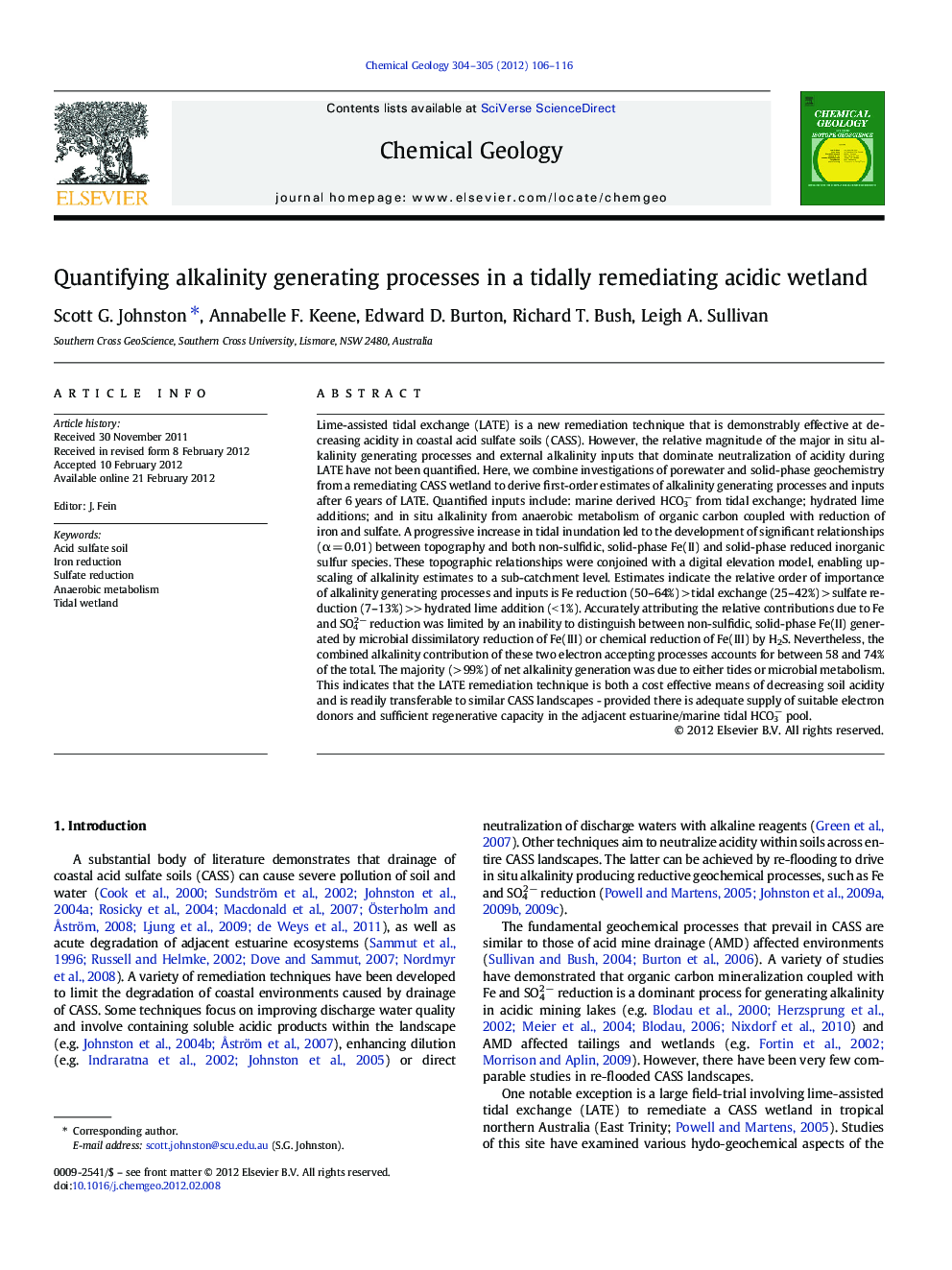| Article ID | Journal | Published Year | Pages | File Type |
|---|---|---|---|---|
| 4699462 | Chemical Geology | 2012 | 11 Pages |
Lime-assisted tidal exchange (LATE) is a new remediation technique that is demonstrably effective at decreasing acidity in coastal acid sulfate soils (CASS). However, the relative magnitude of the major in situ alkalinity generating processes and external alkalinity inputs that dominate neutralization of acidity during LATE have not been quantified. Here, we combine investigations of porewater and solid-phase geochemistry from a remediating CASS wetland to derive first-order estimates of alkalinity generating processes and inputs after 6 years of LATE. Quantified inputs include: marine derived HCO3− from tidal exchange; hydrated lime additions; and in situ alkalinity from anaerobic metabolism of organic carbon coupled with reduction of iron and sulfate. A progressive increase in tidal inundation led to the development of significant relationships (α = 0.01) between topography and both non-sulfidic, solid-phase Fe(II) and solid-phase reduced inorganic sulfur species. These topographic relationships were conjoined with a digital elevation model, enabling up-scaling of alkalinity estimates to a sub-catchment level. Estimates indicate the relative order of importance of alkalinity generating processes and inputs is Fe reduction (50–64%) > tidal exchange (25–42%) > sulfate reduction (7–13%) >> hydrated lime addition (< 1%). Accurately attributing the relative contributions due to Fe and SO42− reduction was limited by an inability to distinguish between non-sulfidic, solid-phase Fe(II) generated by microbial dissimilatory reduction of Fe(III) or chemical reduction of Fe(III) by H2S. Nevertheless, the combined alkalinity contribution of these two electron accepting processes accounts for between 58 and 74% of the total. The majority (> 99%) of net alkalinity generation was due to either tides or microbial metabolism. This indicates that the LATE remediation technique is both a cost effective means of decreasing soil acidity and is readily transferable to similar CASS landscapes - provided there is adequate supply of suitable electron donors and sufficient regenerative capacity in the adjacent estuarine/marine tidal HCO3− pool.
Graphical abstractFigure optionsDownload full-size imageDownload as PowerPoint slideHighlights► We quantify alkalinity generating processes in an acidic wetland after 6 years of lime-assisted tidal exchange. ► Most alkalinity generation was due to either tidal exchange or microbial metabolism of organic carbon coupled with iron and sulfate reduction. ► The remediation technique is an effective means of decreasing acidity in coastal acid sulfate soils. ► The technique relies on adequate supply of electron donors and a sufficient pool of marine-HCO3−.
